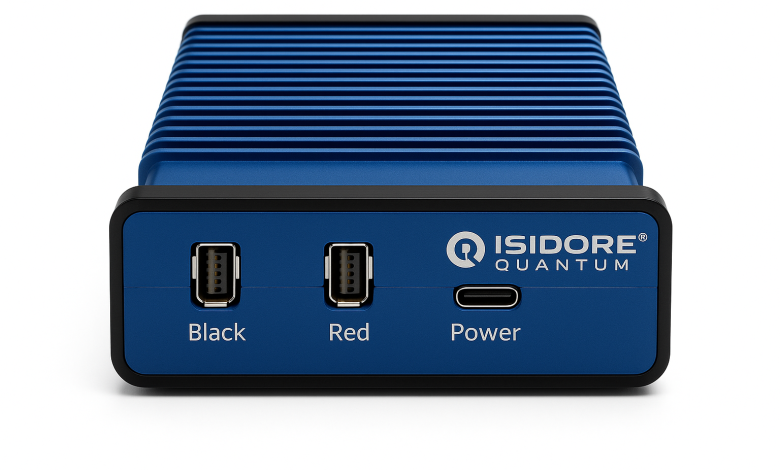
For more than a decade, the cybersecurity world has spoken about “Q-Day” the way people speak about a storm forecast for some distant coastline. The term referred to the moment when quantum computers would unravel modern public-key encryption, yet the danger felt abstract, tucked safely into a far-off future. Many professionals placed it in the 2030s, a problem for the next generation of engineers. Many treated it as something to pencil in for later, once the urgent concerns of the present had been handled.
The idea lived comfortably at the edges of awareness, the way slow-moving risks often do, until signs began to suggest that the horizon was not as distant as everyone once believed.
Later has arrived early.
Across government, academia, and industry, experts are converging on a sobering consensus: quantum capability is accelerating faster than previously forecasted. Sir Peter Knight, one of the United Kingdom’s leading quantum advisors, recently stated that quantum timelines have “contracted a lot” in the last 12 months. Research groups continue to report advances in error correction, system scaling, and engineering maturity. Major investments are now flowing into neutral-atom and superconducting platforms. U.S. intelligence officials already place quantum decryption risk among the top three national security concerns.
Taken together, the signals indicate a rapidly tightening Q-Day window, potentially within this decade, and, in some assessments, as early as 2026. The challenge no longer centers on technology. The challenge centers on timing. Organizations that continue to delay action will face the greatest risk once quantum systems reach cryptographically relevant capability.
The Threat Has Already Begun
Most security leaders now recognize the danger of Harvest Now, Decrypt Later (HNDL) attacks. Adversaries are currently recording encrypted traffic with the intention of decrypting it once quantum capability becomes available. But that’s only half the story.
Less understood, but equally dangerous, is Trust Now, Forge Later (TNFL), a threat category in which future quantum systems can forge digital signatures, undermine identity services, and compromise the software supply chain. Once a quantum adversary gains the ability to impersonate trusted entities, the integrity of entire digital ecosystems becomes vulnerable.
Q-Day no longer stands as a distant crisis because both HNDL and TNFL are already influencing the threat landscape. A current deadline is now in play. Every encrypted record stolen today, along with every signed artifact trusted without hardware-backed verification, turns into a long-term liability.
Governments Are Moving Quickly. The Private Sector Must Follow.
Global policy highlights a rising sense of urgency. Singapore and several EU nations now mandate post-quantum readiness by 2026. Within the United States, Executive Order 14144 instructs federal agencies to begin transitioning at once, and NSM-10 identifies post-quantum migration as a national priority. NIST has completed its first set of PQC standards.
The Japan Financial Services Agency (FSA) is a government agency responsible for overseeing the banking, securities, and insurance sectors to ensure the stability of Japan’s financial system. In its April 2025 guidance, FSA states, “Migrating to Post Quantum Cryptography (PQC) requires substantial time, human resources, and investment, including coordination with IT vendors. Given the resources required, it is inappropriate to delay preparations; immediate action is necessary.
The world is no longer planning for a timeline in the 2030s.
The real question is: how do organizations move fast enough?
Most enterprises rely on sprawling and fragile legacy systems that cannot accommodate long migration timelines or frequent software patching cycles. Critical infrastructure networks in sectors such as water, energy, transportation, and manufacturing continue to operate on hardware that predates IPv6, which is far removed from the needs of modern cryptography. A drop-in, field-ready solution offers the only practical path forward, and the need for such a solution has become urgent.
A Quantum-Safe Device You Can Deploy Today
Forward Edge-AI recently shipped its first Isidore Quantum One-Way Data Diode to National Central University in Taiwan, a country positioned at the center of global semiconductor production and ongoing geopolitical tension. The shipment represents one of the first international deployments of a hardware diode that enforces a genuine one-way flow of data while applying NIST-approved post-quantum encryption.
Traditional one-way transfer devices provide isolation but do not encrypt data in transit, leaving organizations dangerously exposed to HNDL attacks. Competing solutions are also distance-limited. Isidore Quantum closes these gaps completely, securing both the directionality and the confidentiality of data.
Isidore Quantum supports AES-256 GCM and ML-KEM, functions smoothly across both copper and fiber, and eliminates the expensive recabling associated with legacy diodes as well as emerging Quantum Key Distribution (QKD) solutions. Extensive testing across 23 pilots involving the U.S. Army, Navy, Air Force, Space Force, and Microsoft has demonstrated sub-0.5 millisecond latency and throughput of up to 2 Gbps in a fanless design that draws less than 8 watts.
Most importantly, Isidore Quantum embeds cryptographic enforcement directly into the switching fabric. Hardware-level trust validation and cryptographic failover occur in under one millisecond, offering a dramatic improvement compared with the 30-second window permitted under current federal standards.
Isidore Quantum is not slideware in a PowerPoint presentation or a future roadmap item. Full deployment is available today.
As Forward Edge-AI President Ross Coffman, a retired U.S. Army lieutenant general, put it: “Every competitor still has something in the lab. We have something in the field.”
AI Is Accelerating the Risk—and the Defense Must Accelerate Too
Quantum is not the only exponent in play. AI drastically speeds up reconnaissance, side-channel exploitation, protocol mapping, and adaptive intrusion. That’s why Isidore Quantum integrates an AI-driven rules engine trained on trillions of attack vectors, enabling autonomous isolation without human intervention.
For operational technology environments, where uninterrupted service is essential, hardware-anchored AI offers the only practical path to achieving timely PQC compliance.
The Case Against Quantum Procrastination:
The April 2025 guidance by Japan FSA continues with, “While the Financial ISAC is currently working on a roadmap template, institutions should not wait for the competition and should begin what they can immediately.”
Every field has its tipping point, a moment when hesitation turns from harmless to harmful. In cybersecurity, that moment arrives long before most people realize it has come. The concept of “quantum anti-crastination,” as proposed by Marin Ivezic, reflects this subtle shift. The phrase sounds playful at first, almost like a private joke, yet it describes something profound: the discipline of moving early, while choices remain abundant and consequences still negotiable.
Quantum risk does not rush in with fanfare. It gathers speed the way a storm gathers pressure, quietly and steadily. Each breakthrough in quantum hardware, each new advance in error correction, adds weight to the system. Eventually, the balance changes, and the organizations still waiting for perfect clarity find themselves with none at all.
The remarkable part is that the tools to respond are here already. The challenge is not invention, but adoption; not brilliance, but resolve. The transition to post-quantum security will span several years, affecting everything from critical infrastructure to the smallest embedded sensors. And in a transition that large, delay carries a strange property: what seems cautious at first quickly becomes reckless.
So Q-Day does not resemble a distant event on some far-off timeline. Q-Day behaves like a deadline, fixed and unmoving, while the world accelerates toward it.
In the narrowing space that remains, Forward Edge-AI’s Isidore Quantum stands out. The product does not rely on theory or future promises. A clear choice is now available for organizations ready to act before the window closes. For teams unwilling to gamble with time, Isidore Quantum provides a solution designed to ensure deadlines are met rather than missed.




